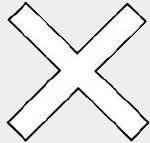Dragon DRR60084 German Sd. Kfz. 161 PzKpfw IV Ausf. F1(F) Medium Tank - Panzer Regiment 31, 5.Panzer Division, Eastern Front, 1942 (1:72 Scale)
"If the tank succeeds, then victory follows."
- Major-General Heinz Guderian, "Achtung Panzer!"
 In April 1941, production of the Panzer IV Ausf. F started. It featured 50 mm (1.97 in) single-plate armor on the turret and hull, as opposed to the applique armor added to the Ausf. E, and a further increase in side armor to 30 mm (1.18 in). The weight of the vehicle was now 24.6 short tons, which required a corresponding modification of track width from 380 to 400 mm (14.96 to 15.75 in) to reduce ground pressure. The wider tracks also facilitated the fitting of ice sprags, and the rear idler wheel and front sprocket were modified. A total of 464 Ausf. Fs were produced from April 1941 to March 1942.[citation needed] On May 26 1941, mere weeks before Operation Barbarossa, during a conference with Hitler, it was decided to improve the Panzer IV's main armament. Krupp was awarded the contract to integrate a 50 mm (1.97 in) Pak 38 L/60 gun into the turret and to deliver the first prototype by November 15 1941.
In April 1941, production of the Panzer IV Ausf. F started. It featured 50 mm (1.97 in) single-plate armor on the turret and hull, as opposed to the applique armor added to the Ausf. E, and a further increase in side armor to 30 mm (1.18 in). The weight of the vehicle was now 24.6 short tons, which required a corresponding modification of track width from 380 to 400 mm (14.96 to 15.75 in) to reduce ground pressure. The wider tracks also facilitated the fitting of ice sprags, and the rear idler wheel and front sprocket were modified. A total of 464 Ausf. Fs were produced from April 1941 to March 1942.[citation needed] On May 26 1941, mere weeks before Operation Barbarossa, during a conference with Hitler, it was decided to improve the Panzer IV's main armament. Krupp was awarded the contract to integrate a 50 mm (1.97 in) Pak 38 L/60 gun into the turret and to deliver the first prototype by November 15 1941.
The shock of encountering the Soviet T-34 medium and KV-1 heavy tanks during the first months of Operation Barbarossa in the summer of 1941 necessitated a new tank gun to meet these threats. In response to the difficulty of penetrating British Matilda Infantry tanks during the Battle of France, the Germans had earlier installed a 50 mm (1.97 in) L/60 gun - based on the 5 cm PaK 38 anti-tank gun - on a Panzer IV Ausf. D. However, with the rapid German victory in Russia, the original order of 80 tanks was canceled before they entered production. In November 1941, the decision to up-gun the Panzer IV to the 50-millimetre (1.97 in) L/60 gun was dropped, and instead Krupp was contracted in a joint development to modify Rheinmetall's pending 75 mm (2.95 in) anti-tank gun design (later known as 7.5 cm PaK 40 L/46). Because the recoil length of the PaK 40 was too long for the tank's turret, the recoil mechanism and chamber were shortened. This resulted in the 75-millimetre (2.95 in) KwK 40 L/43.
This particular 1:72 scale replica of a PzKpfw IV Ausf. F1(F) medium tank was attached to Panzer Regiment 31, 5.Panzer Division, then deployed to the Eastern Front during 1942.
Sold Out!
Dimensions:
Length: 4-inches
Width: 1-1/2-inches
Release Date: November 2009
 Historical Account: "Death Knell" - 5.Panzer-Division was formed in November 1938 at Oppeln. It fought in Poland and France before supplying Panzer Regiment 15 to the forming 11.Panzer-Division.
Historical Account: "Death Knell" - 5.Panzer-Division was formed in November 1938 at Oppeln. It fought in Poland and France before supplying Panzer Regiment 15 to the forming 11.Panzer-Division.
It took part in the campaign in the Balkans before transferring to the Eastern front where it fought on the central sector. It participated in the drive against Moscow and later saw action at Kursk before being pushed back into Latvia, Kurland and finally East Prussia where it surrendered to the Red Army in April 1945 near Danzig.
Following the Balkan campaign the 5. Kompanie of Panzer-Regiment 31 with 5 Panzer II and 17 Panzer III was detached from the division to be used in the invasion of Crete where it was used to form Panzer-Kompanie Kreta. Two Panzer II from this kompanie were transferred to Crete by a small harbor tug under the command of
Oberleutnant-zur-See Albert Oesterlin following urgent requests from the airborne troops fighting on the island.
Kradschutzen-Bataillon 55 was also sent to Crete to take part in the invasion. 2./ KSB 55 and 5./ KSB 55 to be transferred by boat but convoy was attacked and largely destroyed by the Royal Navy. 3./KSB 55 were transferred by Ju 52 aircraft on May 26th, which was soon followed by the other elements of the battalion. Under the command of Oberstleutnant Schacke they fought to help break the encirclement around the fallschirmjager, engage the retreating Allied forces and establish the liaison with the Italian forces landing in the east of the island.
In the following days it advanced east in pursuit of the Allies, at Rethimnon some 400 Greek soldiers were taken prisoner on May 29th and on the 30th it took part in the attack on the Australian forces near Rethimnon capturing some 1,500 Australian soldiers and freeing 300 German POWs.





 German Panzer
German Panzer 





![RAAF Boeing F-18A Hornet Strike Fighter - No. 77 Squadron, RAAF Base Williamtown, New South Wales, Australia, 2007 [Low-Vis Scheme] (1:72 Scale)](http://cdn4.volusion.store/qh9e9-jdqv9/v/vspfiles/photos/HA3503-1.jpg?v-cache=1740197136)



